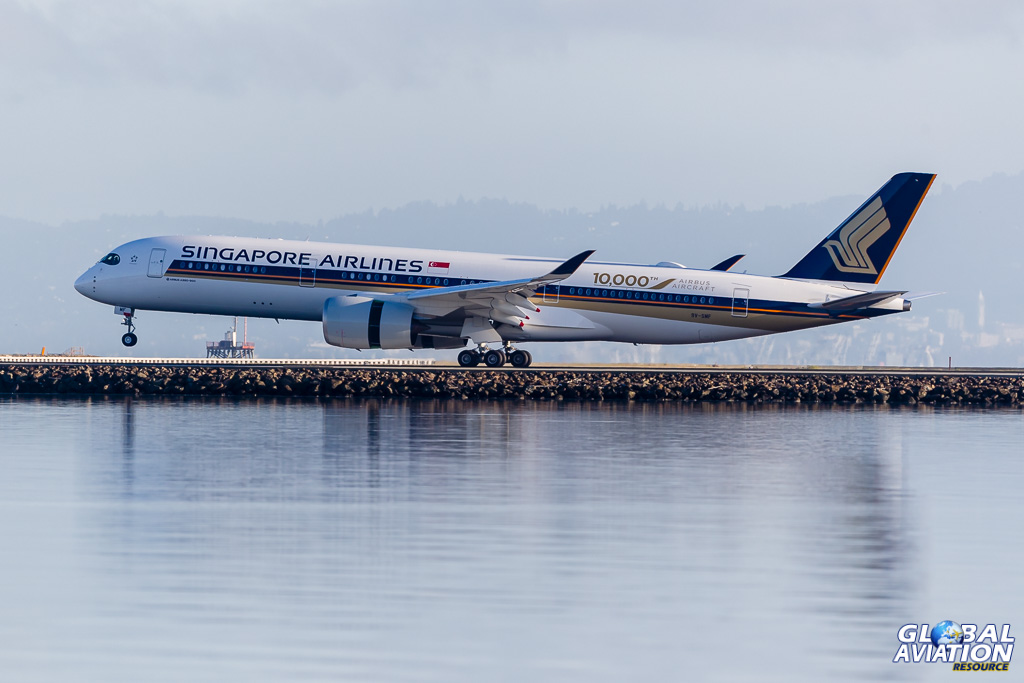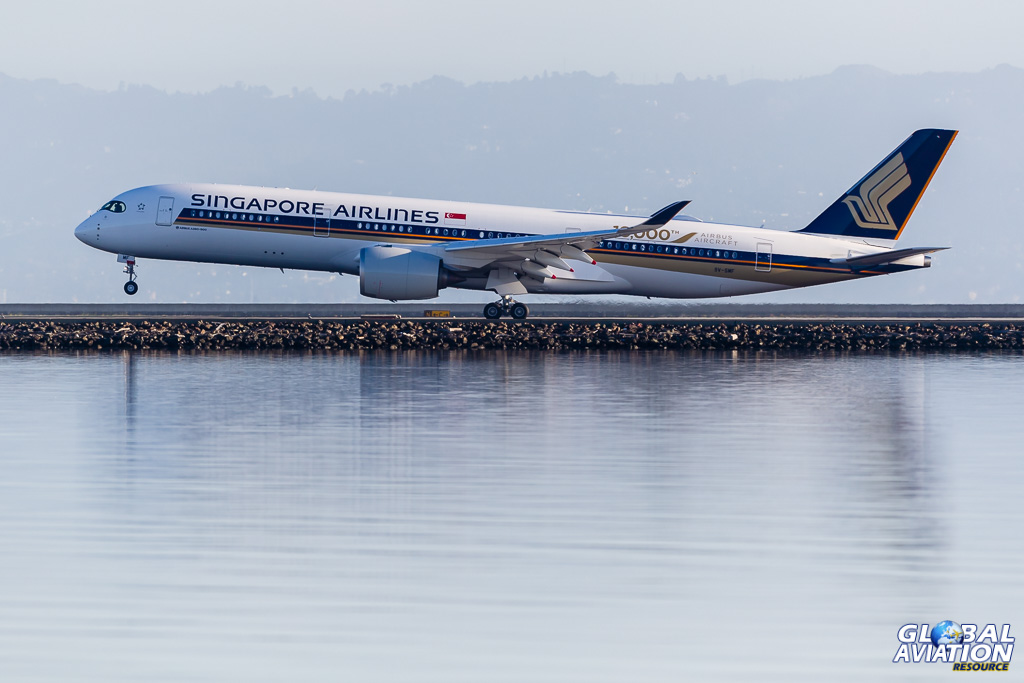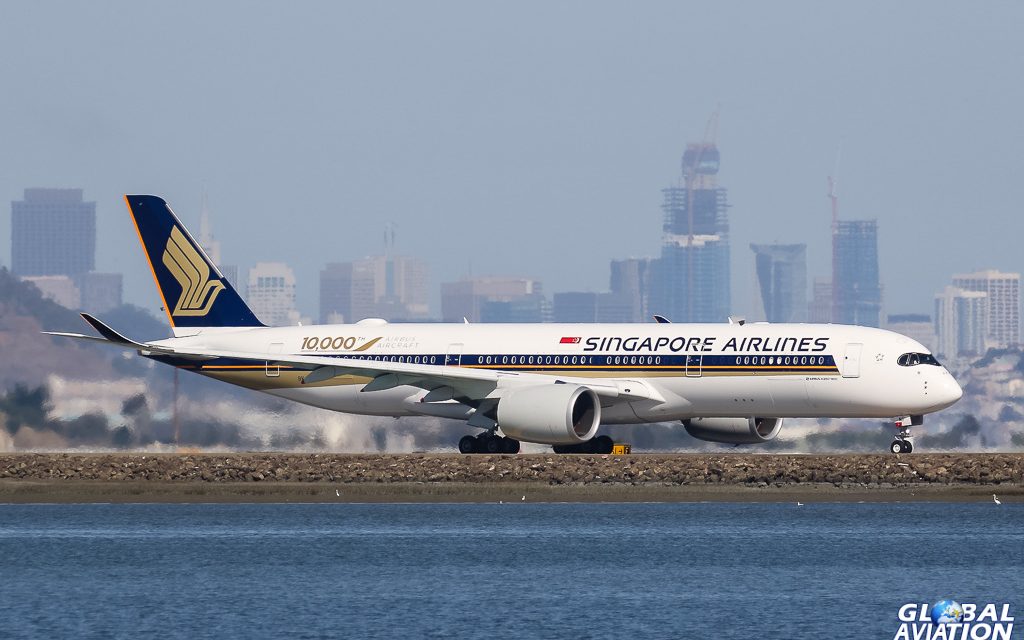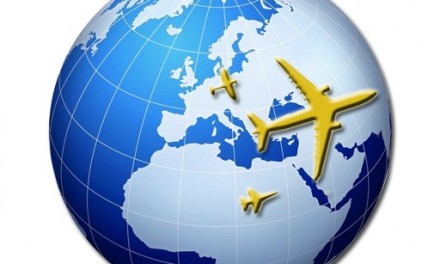With the introduction of more Airbus A350s to service, operators are expanding their usage. Rob Edgcumbe witnessed the arrival of Singapore Airlines’ direct service in San Francisco. He reports here for GAR with additional images from Roger Cain.
With the introduction of the latest generation of widebody twins, airlines are now contemplating services that couldn’t previously be operated economically. The result is direct services that would, up until now, have been operated with a stop en route. One type that is seen as bringing a lot of new routes into the realms of fiscal reality is the Airbus A350.

Taxiing back out for departure. © Roger Cain

The inaugural arrival comes over the threshold. © Rob Edgcumbe – Global Aviation Resource

Climbing away on the return leg. © Rob Edgcumbe – Global Aviation Resource
The first A350s entered service in 2015. However, the ramp up of production has been slow both as a result of Airbus planning a steady introduction and the shortage of cabin components slowing the production line more than originally expected. Blockages in the line are gradually getting resolved and the second half of 2016 is going to see most of the year’s deliveries taking place. More operators will be using the jet and in bigger numbers.
The first version to reach service is the A350-900. It is being followed by the larger A350-1000. Meanwhile, the desire for even more range has resulted in the A350-900ULR being developed. This combines the airframe of the -900 with the enhanced fuel capacity of the -1000. Maximum weight isn’t increased but it provides options for operators to trade payload for range and open very long range routes. Singapore Airlines was a launch customer for this configuration.
Previously Singapore has experimented with very long range operations. For a while they operated A340-500 jets direct to Newark NJ albeit with a severely restricted passenger load. They eventually reconfigured the cabin to all business seats but this wasn’t enough and the service was scrapped a while back. Operating at the extremes of the aircraft’s capabilities meant making money was too difficult. However, the A350-900ULR can allow a better payload to be carried over long ranges. Singapore ordered the aircraft with the intent of reopening the Newark route as well as going direct to Los Angeles and San Francisco.

Thrust reverse comes in while the 10,000th Airbus Aircraft logo is clearly displayed. © Rob Edgcumbe – Global Aviation Resource

Cleaning up after departure for Singapore. © Rob Edgcumbe – Global Aviation Resource

Moments after touchdown. © Rob Edgcumbe – Global Aviation Resource
What they didn’t count on was United beating them to the jump. United has a substantial and growing fleet of Boeing 787s. They have a mix of 787-8 and 787-9 jets. Unusually for airliners, the 787-9 is a stretch of the base aircraft that actually has better range as well as payload. The 787-8 entry to service was anything but smooth with design and production issues causing many delays. When Boeing designed the 787-9, they changed so many aspects of the plane that they are now very different to build. Indeed, the industry rumour is that Boeing no longer wants to sell the -8 model and is now focused on the -9 and the -10, a further stretch.
The range capabilities of the 787-9 are such that United decided that they would launch a direct service from San Francisco to Singapore. This really stole Singapore Airlines’ thunder. Now, rather than wait for the A350-900ULR, they felt pressured to open service up earlier. Consequently, they launched the direct service with a baseline A350-900. There is a slight payload restriction but it can operate the service year round irrespective of the winds. The first service arrived in San Francisco on October 23rd.
For added interest, Singapore launched the service using a jet that they had only recently taken delivery of. This jet was announced by Airbus to be the 10,000th aircraft that Airbus has built since they started out with the first A300 in the 1970s. The aircraft not only carries the normal Singapore Airlines livery but it also has a large logo on the fuselage announcing that it is the 10,000 aircraft.

Heading home again. © Rob Edgcumbe – Global Aviation Resource
The flight was due in to San Francisco just after 10am. However, winds must have been favourable because it actually arrived not long after 8:30. After a turnaround, it was not long before it was heading back out direct to Singapore. A stopping service is still operating in parallel so it will be interesting to see whether the direct service is one that can operate profitably year around – at least until the 900ULR jets become available to operate the service with an unrestricted payload.






